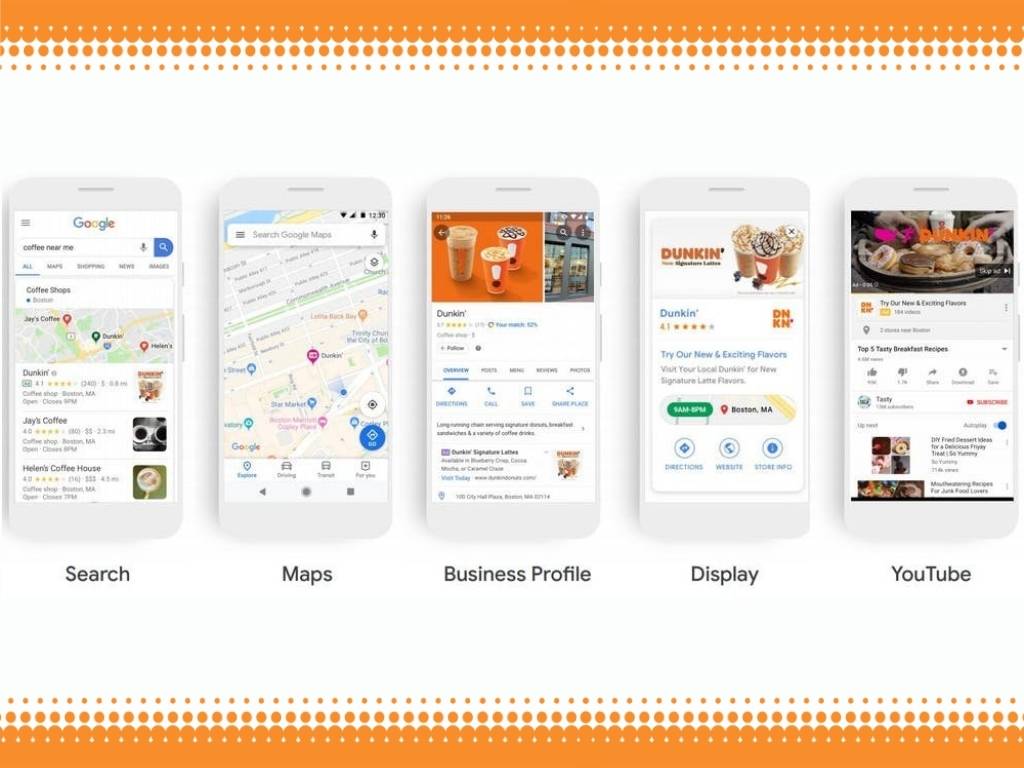What are Google Local Campaigns?
Google Local is a campaign type in the Google Ads platform designed to drive in-store traffic at your retail location. These campaigns run across multiple places including the Google Search Network, Google Maps, YouTube, and the Google Display Network.

How do you Setup a Google Local Campaign?
Google Local is a ‘smart’ campaign type which means the targeting and bidding strategy are automated. Therefore, all you need to do is to create an ad and define the location(s) you want to promote.
- To create an ad, you’ll need to create ad headlines and descriptions, and add images and videos. All together, these components will form an ad unit that will adjust to different formats based on the placement.
- To add locations, it is essential to have your Business Profile claimed and set up in Google My Business so that you can select some or all of your physical locations while going through the campaign setup. From here, Google will automatically target around your business’ physical location(s). The radius can vary depending on the targeted locations and a user’s preference of travel distance to them. Other factors that determine targeted radius include: industry, population density, and existence of competitors.
All other campaign attributes are in the hands of Google’s machine learning. Like with any artificial intelligence, there are pros and cons to this. The most significant benefit is the campaigns’ simplicity and relatively low-maintenance nature. On the flip side, individual marketers have limited control and less room for analysis and optimizations. Specifically, Local campaigns include the following drawbacks:
- No control or insights on targeting – This means that advertisers are unable to create audience-specific messages, and therefore have no transparency on which audiences performed better than others.
- No control or transparency on placements – it’s not clear where the ads were served, and so advertisers cannot know how YouTube, Maps, or Display performed individually. Rather, we’re only able to see a summary of all the placements
- No ad rotation – Advertisers cannot test multiple ad creatives against each other in a controlled way, which puts limitations on true A/B testing.
How can you Measure the Effectiveness of Google Local Campaigns?
Local campaigns aim to maximize your in-store traffic and value using store visits (the campaign uses Google signals to identify users who went to a location after seeing an ad), call clicks, and/or direction clicks, so there is no direct revenue assigned to this campaign. However, the revenue can be calculated based on your business data. All you need to know is your in-store conversion rate, the average value for in-store orders and the number of store visits reported by Google associated with the campaign.
For example, if you have a retail store and you know that ~45% of your store visitors end up buying something, and the average check-out is about $65, then your calculated revenue would be:
Store Visits x In-store Conversion Rate x Avg Check-Out Value
So, if Google reported 400 store visits from your local campaign then the potential revenue is 400 x 0.45 x $65 = $11,700.
Which industries are a good fit for Google Local Campaigns?
Essentially, Local campaigns may be a good fit for any industry that have physical, bricks and mortar locations. Restaurants and retail stores are the two most obvious groups, but industries such as automotive and telecommunications could also be a good fit.
